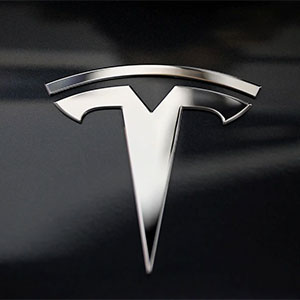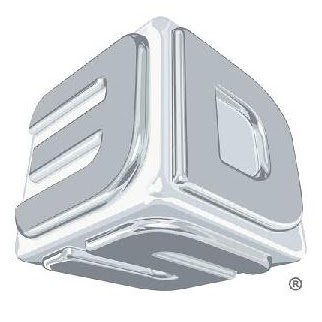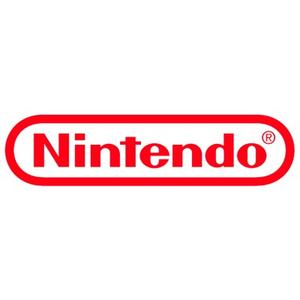Category: Technology Stocks
The Tech IPO Well Has Run Dry
 About the author: Ben Rose is president of Battle Road Research, an independent equity-research firm.
About the author: Ben Rose is president of Battle Road Research, an independent equity-research firm.
After a banner year for initial public offerings of technology companies in 2021, the number of new issues dropped precipitously last year. The stock market correction of 2022 saw the largest tech stocks decline by a greater percentage than the S&P 500. The fall in investor appetite for even the most established tech stocks was a key reason for the dearth of new issues. The correction signaled an end to the era of free money, and the deep compression in valuations made it difficult for private companies to get a clear picture of their public market value. All of the tech-company IPOs of 2021 came to market having demonstrated revenue growth often exceeding 20% in the year prior to their debuts. But virtually all of the tech IPOs that we added to our Battle Road IPO Review generated losses leading up to their IPOs. Not only were the companies unable to turn a profit, virtually all recorded even greater losses over the prior year, as if the companies were being urged by their shareholders to indulge in a final feast to drive top-line growth. Many of these companies promised that after their IPO, they would embark on a steady diet of reduced operating expenses, in order to demonstrate a reasonable path to profitability.
One reason for executives and private round investors to justify the spending binge lies in the faith in the Rule of 40, which holds that any combination of revenue and earnings growth summing to 40% will be the best determinant of sustainable demand for a company’s public market valuation. In theory as well as in practice, a company could have a 20% revenue-growth rate, for instance, and operate at a substantial loss. The formula worked for several years leading up to last year’s tech stock rout. But the stress test of last year’s market correction debunked the Rule of 40. Even the fastest growing companies had their market capitalizations cut to the bone in a year of growth-stock compression.
The demand for growth stocks has undergone a sea change in the last six months. Technology behemoths Microsoft , Google , Amazon , Meta Platforms, and Salesforce , among many others, shed staff in the aftermath of an unsustainable rise in demand for their services, coupled with over-hiring during the pandemic. The decision to reduce operating expenses by companies that were already profitable is a sign that the terrain has shifted away from revenue growth at any price, to growth with a sustainable level of profitability.
Before answering the question why does profitability matter, it is worth asking whether companies with aspirations to go public in 2023 have the discipline in place to show not only top-line growth, but a pattern of steadily narrowing losses. My hunch is that many do not. The message that growth at any price will no longer cut it, is however, being learned the hard way. Many private companies have had their valuations slashed to reflect the lower valuations of their public-company peers. Indeed, venture-capital funding fell to a nine year low in the fourth quarter of 2022, The Wall Street Journal reported. Managing a business profitably will ultimately be rewarded, but the number of companies able to do so may remain limited.
Profitability matters because it demonstrates that a company has the potential, if not the power, to determine its own destiny. Conversely, operating losses are an indication that a company has yet to prove a working business model. The concern is that a company that loses money today will need to be bailed out tomorrow with future stock offerings or convertible debt, which in turn will dilute the interest of existing shareholders. It also means that a company will be unable to repurchase shares to offset equity issuance, a favored form of tech-company compensation which, if not held in check, results in shareholder dilution.
A company incapable of generating earnings today—no matter how promising its top-line growth prospects—may not yet be ready for the rough and tumble of the stock market. And if an unprofitable company does slip through the IPO window, it will likely need to be bailed out by a new round of investors, public or private. Until private companies and their financial backers realize that the terrain has shifted away from growth at any price in favor of growth along with profits—or at least a near-term path to break-even—the tech IPO well is likely to remain dry.
Pure Storage: Bringing Sustainability To Data Storage
 Firms of all sizes from every industry need a system to store and manage their data. To do this, organizations require powerful solutions and technologies. Unsurprisingly, these powerful data storage solutions consume vast amounts of energy, thus having an adverse impact on the environment. As a pioneer in all-flash data storage – data storage infrastructure that only includes flash memory drives rather than spinning disk drives – Pure Storage’s systems mitigate the toll on the environment from all of these data storage endeavors. With sustainability becoming increasingly important to companies, investors, and global citizens, Pure Storage is emphasizing and enhancing the environmental benefits of its data storage solutions over alternatives.
Firms of all sizes from every industry need a system to store and manage their data. To do this, organizations require powerful solutions and technologies. Unsurprisingly, these powerful data storage solutions consume vast amounts of energy, thus having an adverse impact on the environment. As a pioneer in all-flash data storage – data storage infrastructure that only includes flash memory drives rather than spinning disk drives – Pure Storage’s systems mitigate the toll on the environment from all of these data storage endeavors. With sustainability becoming increasingly important to companies, investors, and global citizens, Pure Storage is emphasizing and enhancing the environmental benefits of its data storage solutions over alternatives.
On January 17th, Pure Storage announced that it is now offering an enhanced Evergreen//One Energy Efficiency service level agreement (SLA) that guarantees energy efficiency for firms of all sizes. This new SLA is the first and only guarantee of energy efficiency in the enterprise storage-as-a-service market. The SLA allows companies to measure the energy usage of their data storage systems in Watts per tebibyte. If firms’ maximum Watts per tebibyte thresholds are passed, Pure Storage is committed to providing them with service credits and will undertake remediation actions at no cost. We note that this SLA fully aligns with Pure Storage’s mission to provide organizations with the most sustainable storage solutions.
This new SLA continues Pure Storage’s commitment to offering highly sustainable data storage products that contribute significant environmental benefits over alternative storage systems. Beyond the new SLA, Pure Storage offers the densest and most efficient flash modules on the market, enabling firms to leverage better data storage features at a lower power output and cost than from the company’s rivals. Pure Storage notes that its all-flash storage solutions operate up to 80 percent more efficiently than competing all-flash products. As Pure Storage develops its products with an evergreen architecture – so they do not grow obsolete or have to be replaced – the company can mitigate energy waste by extending the lifespan of its hardware and delivering non-disruptive over-the-air updates. We note that 97 percent of Pure Storage’s products are still in use six-years after they are purchased. Pure Storage is able to provide more effective data storage with less power output and physical equipment, enabling organizations to limit their environmental impacts and costs.
With more and more importance placed on sustainability and the environment, combined with the need for organizations of all kinds to store and manage their data, it is crucial for firms to be able to operate data storage solutions that are not detrimental to the planet. Pure Storage is capitalizing on this, as the company’s all-flash data storage systems are the most environmentally friendly on the market. As firms both large and small view the impact of their decision-making on the health of the planet, Pure Storage has leaned into its ethos, and stands to benefit from rising customer adoption.
Tesla Implements Overdue Price Cuts
 Rather than fight it out with the U.S. government over whether a standard Model Y is a cross-over or an SUV, which would make it ineligible for the $7,500 federal tax incentive, Tesla recently enacted over-due price cuts on the Model Y, as well as its entire product line. With a 31 percent price reduction on a base level Model Y (inclusive of the tax credit) Tesla is now better positioned to retain its leading market share of EV sales in the U.S., which currently stands at 65 percent.
Rather than fight it out with the U.S. government over whether a standard Model Y is a cross-over or an SUV, which would make it ineligible for the $7,500 federal tax incentive, Tesla recently enacted over-due price cuts on the Model Y, as well as its entire product line. With a 31 percent price reduction on a base level Model Y (inclusive of the tax credit) Tesla is now better positioned to retain its leading market share of EV sales in the U.S., which currently stands at 65 percent.
The move recognizes the unsustainable 30 percent-plus rise in Tesla’s list prices over the last two years brought about by supply chain bottlenecks and component shortages coming out of the global pandemic. Rather than rely on Tesla’s generous pricing umbrella, competitors will have to follow suit. The next battleground will be the composition of battery materials and critical minerals thresholds required to qualify for the full federal credit.
At the start of the New Year, Tesla’s core EV models, the Model 3 sedan and Model Y small SUV, became eligible for a U.S. federal income tax credit for the first time in over two years.
The most important price cut was on the base-level Model Y, which was reduced from $65,990 to $52,990—a 20 percent reduction. When factoring in the $7,500 federal tax credit, the price cut amounts to a 31 percent reduction in price. At its new price point, the base level Model Y for the first time fits comfortably within the $55,000 cap for passenger cars and cross-overs.
Over the last two years, Tesla Model 3 prices rose by over 30 percent, as component shortages and supply chain bottlenecks drove prices higher both during and immediately following the end of the pandemic in the U.S. These price increases were unsustainable, and inconsistent with growing the EV market further. The new Model Y price opens up an entirely new segment of buyers unable to afford a $66,000 car, and makes Tesla’s pricing more consistent with the intent of the Inflation Reduction Act, whose goal was to stimulate demand for non-carbon emitting vehicles, while making EVs more affordable. The previous federal tax credit had income limits, and some lawmakers complained that it subsidized EV purchases only by the wealthy. With a $125,000 single tax payer, $150,000 head of household, and $300,000 joint household income limit, the new tax credit opens up the market to a new demographic that may not have considered an EV purchase previously.
It will be interesting to see whether Tesla will be able to keep up with demand. The Model Y and Model 3 together account for about 65 percent of the EV market in the U.S. At the end of 2022, Tesla was just getting started in the ramp-up of its Austin Texas factory, which was said to be producing about 12,000 Model Ys per month. In Austin, production is limited to the Model Y. The ramping of production means that Tesla will achieve greater scale economies as time progresses, particularly as component shortages and supply chain bottlenecks continue to improve.
Amazon.com: Eyeing the Home Robot Market?
 According to what appears to be a credible article in last week’s Bloomberg Technology, Amazon.com is proceeding with plans to create a home robot, through a product development effort that has been code-named Vesta, as part of its Lab126 consumer device division, based in Sunnyvale, California. Lab126, led by Greg Zehr, a former head of R&D for Palm, a pioneer in mobile computing, is credited with the introduction of Kindle e-book reader, and is responsible for the Amazon Echo, FireTV set top boxes, and Fire tablets. It is unclear what purpose an Amazon.com home robot would serve, but in general terms the speculation is that Amazon.com is looking to build on the success of the Amazon Alexa assistant and Echo home speaker product line by creating a roaming version of Alexa, perhaps with the ability to conduct basic house chores.
According to what appears to be a credible article in last week’s Bloomberg Technology, Amazon.com is proceeding with plans to create a home robot, through a product development effort that has been code-named Vesta, as part of its Lab126 consumer device division, based in Sunnyvale, California. Lab126, led by Greg Zehr, a former head of R&D for Palm, a pioneer in mobile computing, is credited with the introduction of Kindle e-book reader, and is responsible for the Amazon Echo, FireTV set top boxes, and Fire tablets. It is unclear what purpose an Amazon.com home robot would serve, but in general terms the speculation is that Amazon.com is looking to build on the success of the Amazon Alexa assistant and Echo home speaker product line by creating a roaming version of Alexa, perhaps with the ability to conduct basic house chores.
The authors of the article indicate that prototypes have been built with advanced cameras, and that Max Paley, a former Apple executive, is working on computer vision technologies for a home robot. The Bloomberg article suggests that Amazon.com plans to “seed” robots in homes by the end of this year, and could potentially launch a commercial robot sometime in calendar 2019. The article also indicated that based on Amazon’s prototypes and tests, it may choose not to enter the market.
Is Amazon.com’s Entry Plausible?
Despite its failure in the smart phone market, Amazon.com has emerged as a prolific consumer electronics product company, having made a number of successful bets, most notably having created the e-book market with the Kindle, and more recently creating the market for smart home assistants, via Alex and Echo. Importantly, Amazon has had its greatest success in categories that it creates. In the Kindle e-reader category, Amazon used to have some competition from the Nook, but not much anymore. Google, which is looking to parlay its success with Google Assistant into the Google Home product line, is playing a severe game of catch up to Amazon.com, as the Echo device family holds a more than two-to-one market share advantage against the Google Home product. Alphabet recently merged its Nest division, which provides, smart thermostats, smoke detectors, webcams, and home alarm systems, into its Google hardware division, suggesting that the Google assistant will be more tightly integrated into Google’s smart home offerings.
At this point it remains unclear what Amazon.com’s product and delivery plans are for the smart home, beyond continued updates to the Echo device family. Amazon.com has a growing base of talented engineers, and proven expertise in addressing the smart home, through the success of Alexa and Echo. Amazon also owns its own robotics company as a result of the $750 million acquisition of Kiva Systems back in 2012. Kiva has been focused on robots for warehouse fulfillment operations, and it is unclear whether the robotic R&D efforts of Kiva, based on the East Coast, and Lab123, are linked.
Our sense is that Amazon.com has many of the pieces in pace to create some type of consumer robot. The question we have is how long it would take Amazon to commercialize a product, and what tasks it would perform. Another key question is whether Amazon.com will choose to enter the market at all, given the large number of other product opportunities that it has under consideration.
Twitter: Obstacles to Overcome
 As of this writing in late December, Twitter (NYSE: TWTR) continues to struggle, relative to its internet advertising peers Facebook (NASDAQ: FB) and Google (NASDAQ: GOOGL). Despite a flurry of activity in the fall, during which the company was rumored to be on the auction block, the stock has floated back down to earth, and then some, as investors consider several ongoing challenges faced by the company. Among these are persistent management turnover, a struggle to rekindle user growth, and what we perceive to be mediocre earnings quality.
As of this writing in late December, Twitter (NYSE: TWTR) continues to struggle, relative to its internet advertising peers Facebook (NASDAQ: FB) and Google (NASDAQ: GOOGL). Despite a flurry of activity in the fall, during which the company was rumored to be on the auction block, the stock has floated back down to earth, and then some, as investors consider several ongoing challenges faced by the company. Among these are persistent management turnover, a struggle to rekindle user growth, and what we perceive to be mediocre earnings quality.
Management Turnover Continues
In the first 18 months following its IPO in November of 2013, Twitter was plagued by rampant management turnover, including a 60-day interval, during which three of the top five executives listed in its S-1 filing resigned or were reassigned to new posts in the company. Jack Dorsey, Twitter’s Chairman and co-founder, became CEO in October of 2015, and, until recently, management turnover had stabilized.
On November 7th Twitter COO Adam Bain informed the company of his decision to resign, after a six year stint, which featured a role as head of advertising sales. Two days later, Twitter announced that it had appointed CFO Anthony Noto as COO. Noto will continue in a dual role as COO and CFO until a new CFO is hired. The COO position is crucial, as Twitter’s CEO Jack Dorsey continues to split his time between Twitter and Square, another company that he co-founded. Noto, who had been in charge of live content, in addition to his CFO responsibilities, is now in charge of global advertising sales, data, MoPub, as well as global partnerships and business development.
Then on December 20th, Twitter’s chief technology officer, Adam Messinger, resigned. On the same day, Twitter’s VP of product, Josh McFarland let it be known that he was leaving the company to join a venture capital firm.
Working to Rekindle User Growth
Twitter reported its lowest-ever rate of year over year revenue growth in Q3 2016, as advertising sales rose just six percent over the prior year. This was the seventh consecutive quarter that sales growth declined. Monthly active users (MAUs) grew by just three percent in the last quarter. In addition, the company has, for several years, declined to report the number of daily active users, which are suspected to be considerably lower than its 317 million MAUs.
Twitter is working behind the scenes to induce users to utilize the service more frequently. Efforts underway include the addition of new content, such as Thursday Night Football, as well as the application of machine learning and artificial intelligence to improve the user experience, particularly in the area of notifications, and home timeline, where the majority of user time is spent. The company is focusing in particular on improving the relevance of user notifications, and emphasizing topics and interests, rather than following people per se, as methods to improve user engagement.
Earnings Quality Remains Poor
Like most VC-backed West Coast technology companies, Twitter utilizes a healthy dose of stock-based compensation, which reduces the near term cost of compensating employees, but passes the longer term cost along to shareholders, who are left to absorb the increased issuance of stock in the form of reduced earnings per share, once the options grants are exercised. In the third quarter of 2016, stock-based compensation accounted for 32 percent of gross operating expenses. SBC is particularly noteworthy within research and development, where it accounted for 49 percent of gross research and development expenses in the third quarter.
Another area of concern regarding Twitter’s EBITDA presentation is how it accounts for research and development costs. Twitter continues to capitalize, rather than expense, a considerable portion of its research and development costs. While this is a perfectly legal practice, we believe R&D costs should be expensed in the period in which they are incurred, rather than capitalized as assets that can be amortized later through COGS, at which point the non-cash amortized expense is viewed by many to be inconsequential.
Twitter continues to languish relative to its internet advertising peers. Our sense is that the company still has obstacles to overcome, as its management ranks continue to shift, user growth remains tepid, and the company’s earnings quality remains low.
Proto Labs: Growing Pains Begin
 With trailing twelve month sales of $289 million, and a market cap of roughly $1.6 billion, Proto Labs, based in Maple Plain Minnesota, is the largest provider of quick turn manufacturing services, with offerings for plastic and metal-machined parts. Through the use of patented technology for plastic injection molding and CNC machining, as well as an advanced web-based ordering system, PRLB is an outsourced partner to its more than 8,000 customers, who seek help in creating prototypes as well as production runs of up to 10,000 parts. In addition, PRLB has acquired a couple of companies that provide 3D printed part services, which collectively account for about 13 percent of sales.
With trailing twelve month sales of $289 million, and a market cap of roughly $1.6 billion, Proto Labs, based in Maple Plain Minnesota, is the largest provider of quick turn manufacturing services, with offerings for plastic and metal-machined parts. Through the use of patented technology for plastic injection molding and CNC machining, as well as an advanced web-based ordering system, PRLB is an outsourced partner to its more than 8,000 customers, who seek help in creating prototypes as well as production runs of up to 10,000 parts. In addition, PRLB has acquired a couple of companies that provide 3D printed part services, which collectively account for about 13 percent of sales.
Proto Labs provides customers with the crucial benefits of faster time to market, improved product quality, and the ability to quickly customize low volume production runs. With seven manufacturing facilities around the world, Proto Labs derives less than 25 percent of its revenue from overseas operations. The company’s customers include manufacturers and designers of medical devices, cars, aerospace, defense, and aviation products, as well as consumer electronics, and industrial machinery. Each quarter, Proto Labs conducts a high level of repeat business within its customer base, typically around 80 percent. Importantly, no customer accounted for more than two percent of sales in 2015.
Large industrial manufacturers have been reluctant in the past, for a variety of reasons, to outsource prototyping and production. The reasons relate to the desire to maintain captive production of prototypes and custom parts, and the preference to keep low volume manufacturing in house. However, the trend toward mass customization, in which consumers desire near custom-built products in smaller quantities with fast turnaround times is at odds with the core competency of many manufacturers who are unable to achieve the desired unit costs that come with low volume production. Outsourcing production also allows companies to concentrate on other core competencies, such as product design, marketing, distribution, and customer service.
However, recent challenges attendant to soft demand in the industrial machinery vertical, as well as challenges in integrating the Alphaform 3D printed parts service will weigh on sales growth and margin expansion.
Proto Labs: Recent Developments
Soft Demand in North America
Proto Labs’ Q2 revenue of $75 million grew by 17 percent over the prior, including the results of Alphaform, a 3-D printing operation which was acquired last year, and contributed nearly $5 million in revenue in Q2. US revenue, which accounts for 74 percent of sales, grew by just six percent versus the prior year, the slowest rate in a couple of years. Despite the fact that no single customer accounts for more than two percent of sales, Proto Labs is seeing weakness in its top 20 accounts, and cited industrial and commercial equipment as particularly soft verticals in the quarter. Importantly, plastic, rubber and die cast injection molders and machine shops, who normally outsource prototypes and low volume production runs to Proto Labs, are now doing more in-house manufacturing of these parts and prototypes, due to their own excess capacity.
Proto Labs is also seeing project delays. CNC Machining operations, which normally account for about a quarter of quarterly sales, were relatively weak, rising by just seven percent over the prior year. Bright spots during the quarter include relatively strong performance from both Europe and Japan, which account for 23 percent, and three percent of sales, respectively. Europe, excluding the contribution from Alphaform, grew by 24 percent, and Japan grew by 46 percent.
Despite a soft quarter, Proto Labs’ quality of reporting remains consistently strong. During the second quarter PRLB generated $20 million in cash from operations and allocated $14.1 million to capital expenditures, of which $8 million were for facilities, as the company is adding capacity in North Carolina, and in Japan. As a result, cash on the balance sheet increased by $7 million on a sequential basis.
Alphaform Impact
Alphaform, a German-based 3D printing operation acquired at the end of 2015, remains an integral part of Proto Labs’ strategy to accelerate its European operations in the 3D printed parts services business. 3D printing contributed $9.1 million in revenue in Q2, flat with the preceding quarter, and up 67 percent versus the prior year. However, the growth was almost entirely due to the addition of Alphaform last year. When excluding the $4.8 million contribution from Alphaform, 3-D printer revenue growth was nominal.
Alphaform diluted the company’s gross margin by 310 basis points, a pattern which has been the case since the company was acquired. The lingering impact of certain Alphaform contracts with lower gross margins, as well as several niche businesses such as metal and magnesium injection molding, which are in the process of being discontinued by Proto Labs, contributed to relatively weak margins in the quarter.
Sales Management Disruption
Back in April of 2016, Proto Labs disclosed that its VP of global sales had resigned. Since then, the company has been hiring new sales managers, in an effort to reduce the ratio of sales managers to sales people. Proto Labs has also engaged a consulting firm to examine its sales processes and recommend new ones, pending their conclusions. The company is also in the process of hiring a new chief revenue officer, which it expects to do by the end of the calendar year.
Prognosis
Despite the above-mentioned growth pains, overall, we see Proto Labs as among the best positioned manufacturing technology companies. Proto Labs maintains a strong balance sheet, with total cash and securities of $164 million, or $6.18 in cash per share, and no debt. The company maintains a conservative current ratio of 6.3, and accounts receivable DSOs were a modest 41 days at the end of the quarter, up by just a day versus the prior year. Return on equity was 15 percent on a trailing twelve month basis, consistent with prior periods. Importantly, Proto Labs has done nothing to stretch its quarterly performance, and maintains a high quality of reporting integrity. The company’s expertise in manufacturing materials and production should continue to position it well for the long term.
3D Systems: Can New Management Turn the Tide?
On April 4, 2016, following a six month search, the board of directors of 3D Systems (3DS hereafter) appointed Vyomesh Joshi, aka VJ, as president and CEO. The appointment occurred as the venerable manufacturer of 3D printers attempts to regain its footing, following an extended period of questionable acquisitions, loss of market focus, and damaged credibility among investors.
Joshi, aged 62, had been president of the Imaging and Printing Group of Hewlett Packard for 11 years, beginning in February 2001, and left as EVP in March of 2012, bringing to a close a 31-year career at HP, after HP, in one of its many reorganizations in the last number of years, combined printers and personal computers into the same business unit. While leading the $26 billion H-P printer business, Joshi doubled the division’s operating profit. Joshi appears to have been lured out of near-retirement with a stock and options package worth a potential $27 million, based in large part on 3DS’ future stock performance. Joshi is currently on the board of directors of both Wipro (NYSE: WIT) and Harris Corporation (NYSE: HRS). He received his bachelor’s degree in engineering from L.D. College in Ahmedabad, India, and a master’s degree in electrical engineering from the Ohio State University.
Joshi replaces 3D Systems’ highly flamboyant and acquisitive CEO Avi Reichental. Over the last few years 3DS has endured numerous set-backs, including an over-emphasis on acquisitions for growth, missteps in the consumer printer market, distribution channel challenges, product quality issues, a delay in the filing of its 2015 10-K, along with a lack of investor confidence, which has resulted in a more than 80 percent contraction in its share price since peaking at $97.25 in late 2013.
Since taking the helm at 3DS Joshi has been somewhat coy regarding future plans, but has noted the company’s lack of operational efficiency, and the challenge to build a sustainable corporate culture from among the company’s employee base of roughly 2,500, many of whom have come to 3DS via acquisition. In mid-June 3DS announced it had hired John N. McMullen, age 58, as VP Finance and CFO, replacing David Styka. McMullen had most recently been at Eastman Kodak, where he took the helm as CFO beginning in June of 2014. Prior to that, McMullen, was SVP Finance and Corporate Treasurer, as well as CFO of HP’s Imaging and Printing Group, where he worked alongside 3DS’ new CEO, Joshi.
The new management team will have much to confront, including helping customers sift through the reality versus the hype of 3D printing, along with the need to create printers with faster speeds and more precision to produce parts that can be used in volume production, in addition to prototypes utilized for visualization and marketing purposes. 3DS has, along with many of its competitors, from time to time over the last three years, produced printers with varying levels of product quality.
With regard to Joshi’s future strategy, we can gain a glimpse into his thinking. In an address before the Net Impact Conference at Stanford in November of 2005, Joshi spoke of the elements required to create a sustainable business. These include: identifying holes in the market, developing appropriate price models, establishing business partnerships, fostering trust and respect among employees, and providing leadership that puts business first, people second, and the egos of managers third.
Brooks Automation: Poised for Recovery?
 Is Brooks Automation poised to Participate in Industry Upswing?
Is Brooks Automation poised to Participate in Industry Upswing?
With trailing 12 month sales of $546 million, and a market cap of $680 million, Brooks Automation (NASDAQ: BRKS), based in Chelmsford Massachusetts, is a leading provider of automation equipment and services to the semiconductor, LED, and consumer electronics industries, which collectively account for 80 percent of sales. Life sciences accounts for the remainder, and is comprised of biological sample storage systems, consumables, and services, which leverage Brooks’ core competence in cryogenic and automated manufacturing equipment.
The cyclical semiconductor business remains Brooks’ largest and most profitable segment, where it serves over 200 OEM customers, including Applied Materials (NASDAQ: AMAT), Tokyo Electron (OTC: TOELY), Lam Research (NASDAQ: LRCX), and KLA-Tencor (NASDAQ: KLAC), who are in the midst of merger discussions. Brooks also conducts business directly with many of the leading semiconductor device makers, including Samsung, Toshiba, Intel (NASDAQ: INTC), Taiwan Semiconductor Manufacturing Company (NYSE: TSMC), and Micron (NASDAQ: MU). Over the last several months, Brooks has begun to see growing demand for its vacuum robots, and contamination and control solutions, which comprise about 40 percent of semi cap equipment sales.
Four years ago Brooks embarked on a strategy to divest non-core businesses, expand in the semiconductor equipment business, and diversify into life sciences, primarily through acquisition. Brooks Life Sciences parlays the company’s core competencies in cryogenics and automation into the cold storage, retrieval, and tagging of biological samples. Brooks has acquired five companies in the last four years, and the division now claims over 100 customers, including the top 20 drug and biotech companies.
The all-cash $128 million acquisition of privately-held, BioStorage Technologies, an Indiana-based provider of sample management services, was completed late last year. The business is on track to generate over $40 million revenue, and in doing so, has enabled the life sciences segment to achieve a $100 million annualized run rate, with services and consumables accounting for about 60 percent of the total. Though not yet profitable, Brooks Automation narrowed the operating loss in the segment to $2 million in the March 31 quarter, and with a recent restructuring, targets profitability by the end of the September quarter.
Three key swing factors will determine Brooks Automation’s fate over the coming year, specifically whether it:
- participates in the steady recovery of spending in the semiconductor industry, fueled by a resurgence in demand for front-end systems as OEMs and semiconductor customers shift their emphasis to 10 nanometer process technologies.
- achieves profitability in the Life Science segment through greater efficiency, execution, and a more predictable mix of consumables and services for cold storage samples.
- achieves operating margin expansion more broadly, as it concludes a number of cost reduction initiatives, and begins, at long last, to focus on organic, rather than acquisition-driven growth.
As Brooks confronts the above-mentioned challenges, the company provides investors with a degree of downside protection, given its historically strong free cash flow generation, a good balance sheet, with $68 million in cash, or $1.00 per share, no debt, a tangible book value of $3.61 per share, and a compelling valuation vis-à-vis its SMID cap peers in the semiconductor capital equipment business. The company also investors with a dividend, whose current yield is four percent.
Nintendo: Focusing on the Future
Based in Kyoto, Japan, Nintendo, loosely translated as “leave luck to him,” was founded by Fusajiro Yamauchi over 120 years ago in 1889. Nintendo’s modern era began when Hiroshi Yamauchi, a grandson of the founder, became president in 1950. Building on success in toys and games including its Ultra Machine and the Love Tester introduced in the mid-1960s, Nintendo later began to focus on home video consoles for color TVs in the mid-1970s. The company also began to develop its own games under the leadership of Shigeru Miyamoto, who remains the company’s visionary R&D chief. Under his influence, Nintendo created its most memorable and iconic characters, including Mario, Zelda, and Donkey Kong, a video game released in 1981.
In 1980, Nintendo launched the first in a series of hand-held gaming devices, and achieved critical acclaim with the introduction of the Game Boy in 1988. At the same time, the company continued to develop succeeding and successful generations of its hardware console devices, including the Nintendo Entertainment System (NES), which was launched in Japan in 1983 and in the US in 1985. NES bundled in various games, including the Super Mario Brothers, arguably Nintendo’s most iconic series, contributing to NES sales of over 60 million systems.
In 2002, after more than 50 years at the helm, Nintendo president Hiroshi Yamauchi, then aged 65, announced he would turn over the reins to 43 year-old Satoru Iwata, who had emerged from the ranks of Nintendo’s HAL Laboratory subsidiary to become the first non-family member to lead Nintendo. Two years later Nintendo introduced the Nintendo DS, its fourth major hand-held system, which featured a dual, touch screen, along with several successful game titles.
Shipped in time for the holiday season in 2006, Nintendo’s Wii became the most successful game system in the company’s history, ultimately selling over 100 million units, and catapulting the company’s stock to an all-time high of over 70,000 Yen per share on the Osaka Stock Exchange. The console featured relatively straight forward controls, including a remote control device to detect 3D movement, as well as internet connectivity, and the ability to run previous generation Nintendo games. The Nintendo Wii was the best-selling game console of its generation, decisively outselling both the Sony Playstation 3, as well as the Microsoft Xbox 360.
The Wii U, a successor to the Wii, shipped in the fall of 2012, and is generally considered to be among the more disappointing game consoles in the company’s history, inception to date selling nearly 11 million units as compared to over 100 million units for the Wii. The Wii U’s under-powered graphics, closed computer architecture, and paucity of third party game titles available at launch and afterwards, are considered to be among the leading causes of the product’s relatively mediocre performance.
Beginning in January 2014, following the announcement of a 30 percent contraction in profits during the prior nine months, Nintendo then president and CEO Satoru Iwata announced that he would take a 50 percent cut in pay, and that salaries of other key executives would be cut by 20-30 percent. In January of 2015, Nintendo announced its exit from the Brazilian games market.
In March of 2015 Nintendo began a strategic shift and announced that it would for the first time develop mobile games utilizing Nintendo characters for Apple and Android devices through an alliance with DeNA, a Japanese developer of mobile games. At the same time, Nintendo reaffirmed its commitment to dedicated gaming devices, with plans to launch a next-generation video game machine. Having staged a major turn-around in company profitability and performance, as well as a revitalization of the Nintendo brand, the company posted its first profitable fiscal year in several years for the period ended March 31, 2015.
Nintendo continues to maintain very high market share in the handheld device and game category, led by its 3DS platform which currently accounts for about 60 percent of sales and may hold as much as 80 percent of the dedicated market for hand-held gaming devices. In the last year, the company recently launched refreshes of these products in Japan, the US and in Europe, and will launch new software titles for the devices in the coming year. In addition, Nintendo is benefitting from new software titles for the Wii U platform, such as Splatoon, as well as amiibo action figure toys, based on characters from its games, which have been an important tie in to its 3DS and Wii console devices.
We see Nintendo working on three key initiatives to drive growth:
- Development of sequels and new games for the 3DS and Wii U platforms.
- Creation of a next generation “brand new” concept video game device, code-named NX;
- Mobile games for Apple and Android devices that incorporate elements of social networking as well as draw upon its extensive library of video game characters.
Over the last number of generations Nintendo has developed a remarkably creative and collegial corporate culture. For this reason, Tatsumi Kimishima, a Nintendo managing director, who was recently appointed president of the company, will play a key role. Mr. Kimishima replaces Satoru Iwata, Nintendo’s highly-respected president who passed away in July after battling an illness for several years. Iwata led the company through its greatest era of achievement during which the Wii U sold over 100 million units, and more recently developed the company’s mobile strategy.
After having been personally recruited by Nintendo’s legendary Hiroshi Yamauchi 16 years ago to become CFO of the Pokemon Company, a Nintendo affiliate, Mr. Kimishima, now age 65, went on to become president of Nintendo of America, the company’s largest division, in a relatively short time period. In addition to having been a member of the company’s board of directors prior to his appointment as president, he was also one of only a few managing directors, and recently held the position of head of human resources. Prior to joining Nintendo, he spent 27 years with Sanwa Bank, now a part of the Bank of Tokyo.
Our sense is that while Kimishima may lack the technological depth of his predecessor, and may not have the creative talent of several of Nintendo’s key leaders, his understanding of the company’s corporate culture, deep knowledge of Nintendo’s creative games and operations experience as head of Nintendo of America, gives him a unique perspective to manage the company during this crucial time in the company’s history.
PetMed Express (NASDAQ: PETS): In Need of a House Call?
 PetMed’s most recent financial results for the quarter ended March 31 were essentially in line with our revenue estimate of $50 million, as sales grew by three percent over the prior year. The company’s average order size grew by five percent over the prior year to $81, as a result of customers increasing the dosages for their pets in advance of the flea and tick season. At the same time we noted that the company added 10,000 fewer customers than during the same quarter in the prior year. And despite recording a higher percentage of sales from higher margin prescription drugs, the company’s gross margin deteriorated by 200 basis points to 33.9, due to price competition in OTC medications, a category that still accounts for an estimated 40 percent of sales.
PetMed’s most recent financial results for the quarter ended March 31 were essentially in line with our revenue estimate of $50 million, as sales grew by three percent over the prior year. The company’s average order size grew by five percent over the prior year to $81, as a result of customers increasing the dosages for their pets in advance of the flea and tick season. At the same time we noted that the company added 10,000 fewer customers than during the same quarter in the prior year. And despite recording a higher percentage of sales from higher margin prescription drugs, the company’s gross margin deteriorated by 200 basis points to 33.9, due to price competition in OTC medications, a category that still accounts for an estimated 40 percent of sales.
PetMeds had recently been benefitting from a favorable trend away from OTC topical medications to prescription pills, which are easier to administer, and do not require the task of bathing a pet in an ointment that can wash off easily. In contrast to topicals, pills require a veterinarian’s prescription and are typically higher priced and carry better gross margins than OTC products. During the last fiscal year sales from prescription medication rose from 44 percent to 50 percent.
At the same time, OTC medications as a percentage of sales remained fairly constant, and until this most recent quarter, we surmise, margins had been holding up as well. However, the large number of brick and mortar and internet providers of OTC medications have evidently been cutting prices, and thus PetMeds’ margins were hurt. We do not see any reason why margins would rebound in the current or subsequent quarters.
Supplier Concentration
PetMeds offers over 3,000 skus for sale to its customers, however a “significant” percentage of sales come from just 100 skus. Moreover about 50 percent of PetMeds’ sales come from just four suppliers. At the same time, PetMeds is trying to increase its direct relationships with drug manufacturers, many of whom require PetMeds to purchase their products from distributors. These supplier dynamics are not new, yet they illustrate the challenge that PetMed faces in increasing gross margins.
The animal health business is becoming increasingly concentrated, as many of the world’s largest pharmaceutical companies are seeking to gain market share. These include Merck Animal Health, the Merial division of Sanofi, Elanco, the animal health division of Eli Lilly, which acquired Novartis Animal Health last year in the second largest acquisition in Lilly’s history. Other mega players include Zoetis, and Boehringer Ingelheim. While only a sub-set of PetMed Express’ competitors offer prescription as well as over the counter pet medications, still a large enough number do, including PetSmart, CostCo, Target, and Amazon.com. It is unlikely that PetMed will be able to develop a price or cost advantage, particularly given the clout of its supplier base.
Sales Growth Remains Elusive
Despite ongoing attempts to rekindle sales growth in the last few years, PetMeds continues to face strong competition from brick and mortar and other online sources of pet medication. Rising advertising costs throughout the industry have for whatever reason made PetMeds’ management gun-shy with respect to advertising investments to gain market share. Over the course of the last year management has reduced advertising expenses by seven percent, a decision which we believe has been detrimental to new customer growth. The company’s tight-fisted approach to advertising suggests that sales gains are likely to be minimal. We see no evidence that PetMeds is gaining market share during a period of solid consumer spending.
While the above concerns suggest that a house call very much remains in order, we also believe that the patient is by no means incapable of recovery, as PETS’ core competencies include online distribution, customer service, product knowledge, efficient inventory management, and a 2.5 million-plus pet owner customer base that have purchased at least one product in the last 24 months. We believe the company’s valuation on an EV/sales basis remains compelling at 1.2x our 2015 revenue estimate net of cash. At the same time, price competition continues to plague the company, a condition which will need to be monitored.










